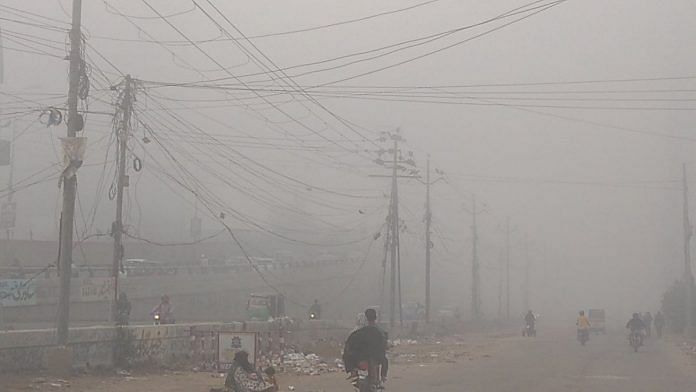New Delhi: Children are dying in Karachi’s Keamari district, and no one knows why. Over three weeks in January, at least 18 people—16 of them children—living in a densely populated area died. So far, 49 people, mostly children, have fallen ill.
Earlier this month, the police lodged 10 FIRs and sealed five factories for allegedly releasing hazardous emissions. But with no clear answers, it sought permission from the courts to exhume the bodies of the victims. The judicial magistrate, on 9 February, allowed the application, and the case is ongoing.
The youngest victim was 18 months old. Calls for answers and justice are growing louder.
The Sindh government in January ordered an inquiry. Karachi’s police surgeon, Dr Summaiya Tariq, told Vice World News that Keamari residents developed cough and fever for three days. This was accompanied by loss of appetite, followed by “asthma-like” attacks.
According to a report by Tribune Pakistan, 26 of the 49 people who fell ill lived in six houses located close to illegal plastic, rubber, and oil factories. “At least 40 of them were under 11 years of age,” stated the report.
Health, environment departments face off
The Sindh Environmental Protection Agency (SEPA) carried out its investigations and ruled out the possibility of air pollution as the cause, but a report released by the Sindh Health Department states otherwise.
SEPA tested the air for the presence and concentration of hazardous materials and gases including sulphur dioxide and carbon monoxide. It gave the air a clean chit, and recommended the health department to look into the possibility of infectious disease or ingestion of contaminated food. SEPA also conducted door-to-door surveys in Keamari and initiated legal action against illegal commercial and industrial activities.
The health department, which tested blood and mucus samples of all 935 residents of the area, arrived at two possible conclusions — deaths were caused by either measles or toxic fumes from the factories. Samples from the children have been sent to Islamabad’s National Institute of Health to test for measles.
But residents insist that factories are emitting toxic fumes. Khadim Hussain, a labourer who lost his wife and three children, lodged an FIR against the four owners of a plastic factory in the area. One has been arrested while the others are absconding.
Also Read: Fines, not jail time – how Modi govt aims to make environment laws ‘tougher’
Industrial hotbox
The toxic fumes are not just affecting Keamari, but Karachi as a whole. The city, known as Pakistan’s industrial hub, is facing the repercussions of this label. Its air quality index (AQI) hit 494 last year and the city has consistently featured on the lists of most polluted cities while the air has been called the “number one public health threat” and a “silent killer”.
The toxic air has been of concern for a while, but public consciousness is alerted only when tragedies like the one in Keamari occur. In an event, earlier this month, public health experts called for the effective functioning of SEPA and a mechanism to check and ban the release of hazardous emissions.
(Edited by Theres Sudeep)



